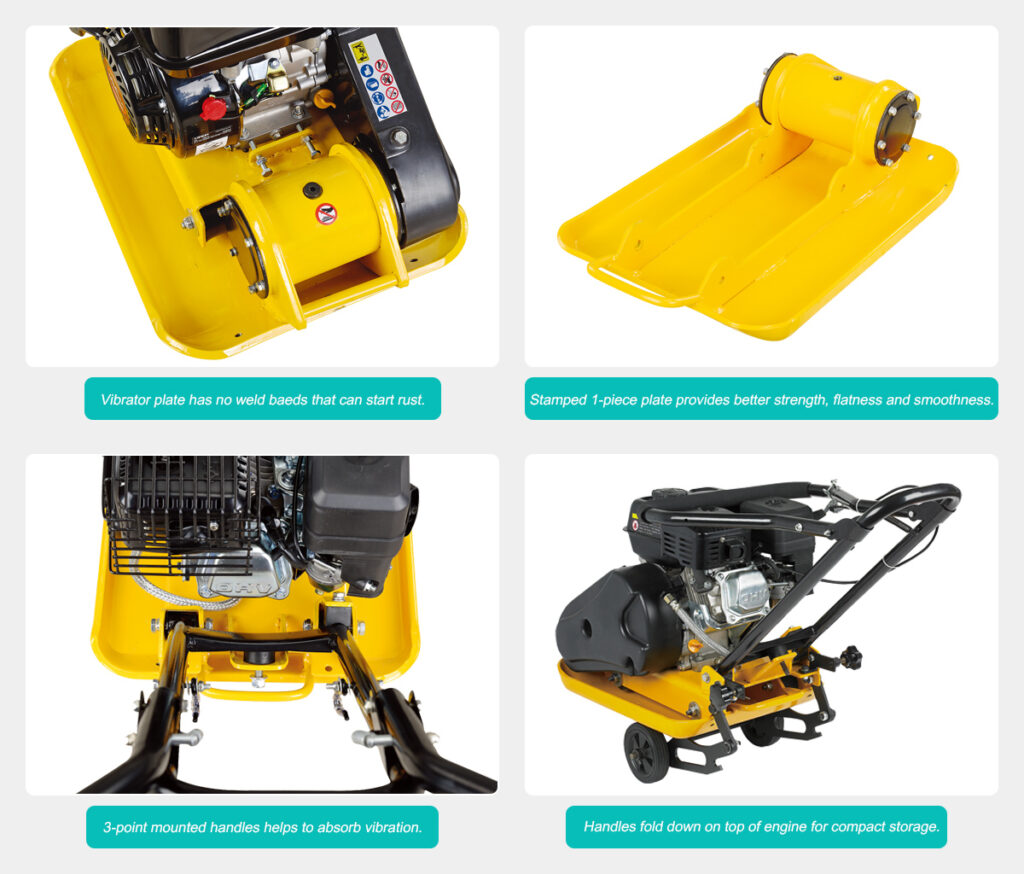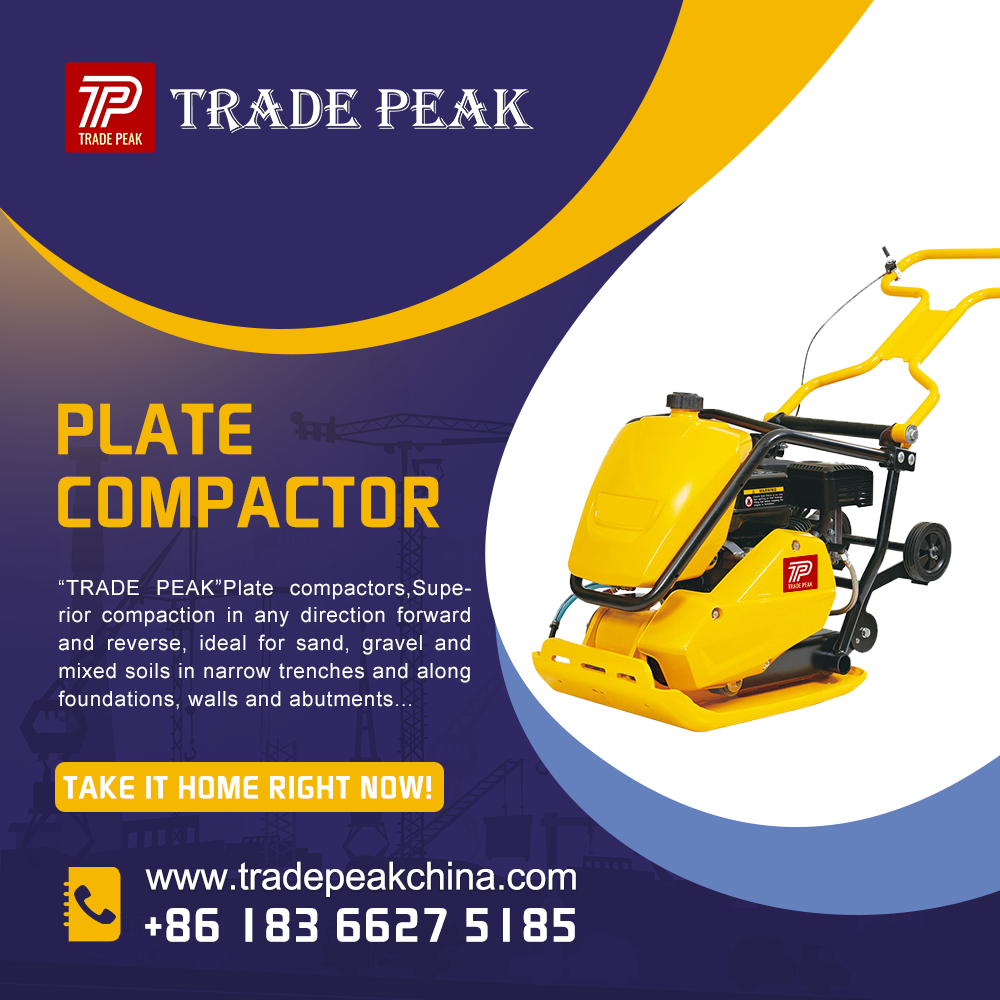Today, we checked these three compactor plates. Is it worth taking the risk with a bargain? Or should you invest in the best-tested Machinery nation in recent years? There have been a lot of options come to the market when it comes to plate compactors and the other day I heard a story of a local contractor who was moaning that his machine had broken again.
And it turned out that he was using a budget machine for a commercial application. He had lots of multi-users being dragged in and out of Vans. It was being left out in all weathers, not exactly the right treatment for a budget machine. So I thought well why don’t we do this video? So that we can explain the difference between budgets and the top end.

Let’s check these three compactor plates out.
Representing the budget end of the scale today, we have the Hyundai HYCP 5030 compactor plates that have a 320 millimeter, 12-inch plate, 78.5 cc unknown engine, weigh 50 kilograms come as standard with a wheel kit and a paving pad, come with a one-year commercial and three-year domestic warranty. It cost us 490 pounds including v80 and as with many budget machines. It also comes in other guises from manufacturers in different colors.
Competing for the middle ground, we have Lumag vp60 compactor plates that have a 300-millimeter 12-inch plate and a Loncin 79cc engine, weigh 64 kilograms come as standard with wheel kit and a paving pad, and standard with a wheel kit and a paving pad, and come with a two-year commercial and five-year domestic warranty, it costs us 575 pounds including vat.
And the top end we have the Wacka Newson BPS 1030b compactor plates that have a 320-millimeter 12-inch plate size, 127cc Briggs & Stratton engine that weighs 53 kilometers and comes ready for a water dribbler, and comes with a one-year warranty, it costs us 1020 pounds including vat.
But first of all, let’s check out how thick the compactor plates are. I am down the business end of it.
So the Wacker compactor plates comes out at 16.6 mil which is a fair thick plate, Because it casts, it does vary in size, so the thickness point is 16.6. The Lumag compactor plates here, there we go 11.6 mil, so we get we are getting thinner and then the Hyundai compactor plates, let’s measure it there because this place is any other reckon is 6.6 mil, so a big difference between all these three down. The cheaper and thinner, more expensive than the thicker makes sense. Let’s check out these bits.
So you want to be able to lift the compactor plates maybe onto a trailer, onto a van, or even into sight into some footings on a house or something well. These two have got somewhere to lift it.
The Wacker compactor plates have this big bar at the front, put a rope around that be able to lift it up nice and easy. The Lumag compactor plates have a really nice central hooking point there. Right in the middle but unfortunately, the Hyundai hasn’t got anything there substantial enough.
I’d say to be able to lift it up properly to be a manhandled job. So handles are probably the most important part for the user, because you are going to be holding onto them all day.

The Hyundai compactor plates are quite basic, There’s nothing revolutionary about them but they do fold for storage or for transport, so in the back of a van they don’t take much more space, or in the shed, it’s nice, and compact and they fold up, they’ve got little springs up there, so you fold them back up like, so you’ve got a little clip there which you can lock them in with which is a little bit fiddly, but it goes in there eventually and you will be able to manipulate the machine a little bit easier and around and about.
So moving onto the Lumag compactor plates a lot of sturdy construction, everything’s very very solid, and the handles do fold up for storage like the Hyundai, but you do have to undo the bolts on each side, which makes it a much stronger design, especially when you’re using the heavier setting and then everything’s all there nice tubular frame all the way up around, and it all joins down to the side you’ve got anti-vibration down the bottom, so when you are using it the handle was taking away that shock out of it and a soft grip top around the thing to make hands nice and comfy and not get a cold one with metal.
Right next one, so with the Wacker compactor plates, and it’s the simplest but probably the easiest to work with, because that’s in using the mode, that’s in transport mode, nice and solid, got anti-vibration down the bottom a little bit of a finger trapper, there if you’ve got that in the wrong place, I nearly found that out but yeah nice solid construction and it works but what it doesn’t have if you want to sort of just lift it up or manipulate it a little bit, you push the handles forward, nothing locks in. It’s wobbly.
So when we start using them and then we’ll find out if that’s an issue or not.
It’s a Hyundai and Lumag Both have wheel kits on the bottom, but the Wacker doesn’t come with one of the standard, but it is an optional extra, Let’s check out these two and see how they are.

First, the Hyundai compactor plates are quite flimsy all you do is pull that one up like that and then fold it down around, and there you are your wheels are underneath, and then to put it back up again into the storage, there’s a little more fiddly because you’ve got to get this on these hooks, these two little hooks here either put that on that, but there’s two of them, so you’ll do that and then pull it down like, it works, but structure-wise a little bit questionable.
Then, the lumag compactor plates are on a tubeless steel construction which does look a lot stronger, and then to put that one into place, you just literally push that forward and fold it underneath which is quite easy, and then pull that back pull, that back out, and then you’ve got this little rubber grommet in there and that just literally locks in, so down and back in again, very simple, right? It’s getting loaded up and go and give them a go in the next blog.
So if you are interested in more testing or comparison performance of the different brand plate compactors, please go to powertools1.com to see more. See you next time!


